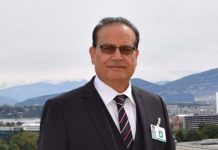Dr. Muhammad Akram Zaheer
The role of a U.S. president, while central to the nation’s governance, is often misconceived as that of an unrestrained and autonomous actor capable of single-handedly shaping the course of history. This perception, although common even in democracies, is far removed from the reality of institutional, structural’ historical constraints that define presidential leadership. Historically, U.S. political cycles reveal a predictable pattern where periods of significant national transformation are preceded by presidencies marked by crisis and perceived ineffectiveness. These cyclical shifts occur roughly every 50 years and are characterized by the election of a president who presides over a tumultuous period of social and economic disorder, ultimately paving the way for a successor who reconstructs and redirects the nation. To understand this cyclical phenomenon, one must examine the historical precedents of such transitions. Following George Washington’rew Jackson became the second significant transformational president, framing his leadership around the extensive settler movement and its accompanying financial developments that were already reshaping the United States. Similarly, Franklin D. Roosevelt took office during the Great Depression, an era of unparalleled economic despair. He not only redefined the nation’s economic structure but also prepared it for the impending global conflict of World War II. Decades later, Ronald Reagan inherited a nation grappling with severe economic stagnation, a lack of capital and demand’ military setbacks in regions like the Middle East. Each of these presidents responded to crises that were not of their own making, yet their leadership set the stage for reconstructing the nation and initiating new trajectories in governance, economy’ foreign policy. Before such transformative presidencies, however, there is invariably a period of disarray, marked by presidents who despite their efforts to govern effectively amidst systemic chaos. This pattern illustrates that the leadership of a transitional president is not about absolute agency but about responding to existing pressures and reconfiguring the nation to meet emerging challenges. The election of Donald Trump in 2016 provides a contemporary example of this dynamic. Trump’s campaign and subsequent presidency were shaped by societal tensions and a growing disillusionment with the preceding political norms. It is essential to recognize that no president operates in a vacuum, free to implement their agenda without encountering institutional and public resistance. Trump’s rise to power was not merely a reflection of economic dissatisfaction, as is often suggested, but rather a response to cultural and ideological divisions within American society. His rejection of the entrenched “culture war” narratives resonated with a significant segment of the population, positioning him as an alternative to the prevailing political establishment.
Trump’s electoral success was rooted in his ability to align himself with public sentiment on issues beyond the economy. His emphasis on recalibrating cultural norms, redefining international alliances’ addressing perceived imbalances in global economic and military engagements reflected a broader desire for change. While economic policies, such as tax reforms and deregulation, formed part of his platform, they were secondary to his overarching narrative of restoring America’s strength and autonomy in an increasingly interconnected and contentious world. A central feature of Trump’s presidency was his attempt to redefine the United States’ role on the global stage. He advocated for a reconsideration of foreign alliances, seeking to renegotiate trade agreements, military commitments’ diplomatic relations to prioritize U.S. interests. This approach did not necessarily signal an embrace of rigid nationalism but rather a pragmatic effort to address what he perceived as unfair burdens borne by the United States in its international engagements. Such a strategy was ambitious, aiming to establish new economic and military models while navigating resistance from domestic and international actors.











